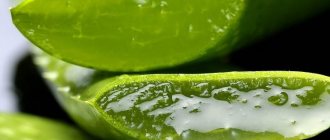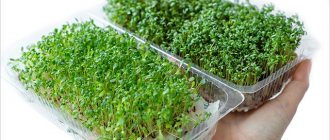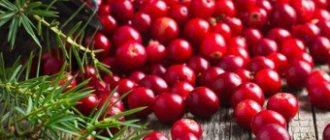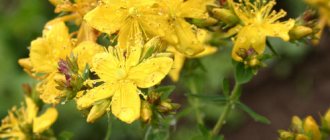The benefits of lemon are undeniable. This tropical fruit is extremely rich in vitamin C and is one of its main natural sources. This property of lemons has led to its wide distribution and popular love during the season of colds and vitamin deficiency. Tea with lemon saves from many ailments, replenishing the reserves of the main fighter for immunity - vitamin C. Lemon juice is widely used in cooking. It is used as a marinade for meat, a base for all kinds of sauces and salad dressings.
The fruit itself comes from Asia, where it is grown on huge plantations. The origin can hardly be called unique; it is a successful hybrid obtained as a result of crossing citrus fruits.
There are many rumors and debates about the benefits and harms of lemon. Yes, the human body needs such products. To prevent one of the most famous citrus fruits from becoming a source of health problems, its use must be approached with common sense and awareness.
Lemons
Description of lemon
Lemon is a small subtropical evergreen tree up to 3-4 (7) m high with a pyramidal or spreading crown, with short spines and reddish tips of shoots, or a perennial shrub. Lemon leaves are petiolate (petioles not winged), oblong-ovate or elliptical, pointed, finely toothed, leathery, shiny, with a lemon scent. Lemon flowers are single or paired, located in the axils of the leaves, white, purple or reddish-violet on the outside, fragrant; calyx five-toothed; corolla 4-8-petalled. The lemon fruit is berry-shaped, oval, often ovoid, 6-10 cm long or more, four to eight cm in diameter, at the top and base elongated into wide low papillae, up to 500 g, light yellow, with a lemon smell; the peel is of medium thickness with convex glands, difficult to separate from the pulp; the pulp is divided into 6-8 radially located segments-nests with soft, dense walls, easily separated from each other when ripe, juicy, sour or sweet and sour; each lobule contains a large number of spindle-shaped to oval juicy bodies - juice sacs, oriented along the radius of the fruit, each juice sac has a long thread-like leg, with which it is attached to the wall of the lobule (juice sacs are attached only to the dorsal wall). Lemon seeds are medium-sized, ovoid, oval, angular, smooth or wrinkled, off-white in color, with one or more embryos, with green or white cotyledons, located along the ventral seam of the lobule. Lemon blooms from April-May for several months. Lemon fruits ripen almost all year round, most often in November-February, before frost sets in. There are about 30 species of lemon in the world, from which dozens of hybrid forms have been created.
Lemon raw material
Ripe lemon fruits without peel - fructus Citri, peel (zest) - exocarpium Citri, lemon oil - oleum Citri. Fruits with the stem torn out are not allowed. The ugly shape of a lemon indicates improper physiological formation; such fruits are of low quality. Lemon oil is obtained by pressing fresh peels (during distillation with steam, the natural smell is largely lost). It is a clear or slightly greenish liquid with a lemon odor and a pleasant taste with a bitter aftertaste; stored in dark, well-closed bottles, filled to the top, in a 10% ethanol solution; When stored, it thickens and goes rancid; used as a means of correcting the taste and smell of drugs.
Chemical composition of lemon
Lemon fruits contain: ascorbic acid (up to 45-140 mg%), up to 0.04 mg% thiamine, up to 0.02 mg% riboflavin, up to 0.06 mg% pyridoxine, up to 0.2 mg% pangamic acid, 0. ,01-0.02 mg% β-carotene, up to 0.2 mg% vitamin E, up to 500 mg% P-active substances, vitamin D, glycosides of various structures, essential oil, flavonoids, diosmin (flavone), hesperidin, erythrocitrin , phytoncides, sesquiterpenes, cytosterol, 0.5% pectin substances, up to 6% organic acids (6.9-8.1% citric, malic), 2.06-6% sugars (0.6-1% fructose, in pulp - mainly sucrose (0.74-1.2%), in the peel - glucose (0.8-1.3%)) - sugars in lemon are 2.5 times less than in grapefruit, 3 times less, than in orange, and 4 times less than in tangerine, derivatives of coumarins, limethine - citrapten, auraptene, bioxengelicine, bergamottin, potassium compounds (163 mg%), calcium (40 mg%), magnesium (12 mg%), sodium (11 mg%), iron (0.6 mg%), sulfur (10 mg%), phosphorus (22 mg%). Lemon peel contains: 0.4-0.6% essential oil, P-active substances, citrine derivatives, 7-β-ritinosides, flavonoids, diosmin, flavanones hesperidin and eriodictyol, furocoumarins. Lemon essential oil contains: 95% terpenes, L-limonene (90%), citral (3.5-6%) - odor carrier, citronellol, 4-7% geraniol and its aldehyde, 1% geranyl acetate, D-pinene, L -camphene, phellandrene, methylgentenone, octyl- and nonylaldehydes, D-terpeneol and other compounds. Lemon seeds contain: fatty oil, bitter substance limonin, bitterness. Lemon leaves contain up to 0.3% essential oil, 55-885 mg% ascorbic acid, vitamin P. Lemon branches and leaves contain: 0.09-0.24% essential oil. Bark - glycoside citronin.
How to choose?
We discussed above what vitamins lemon contains and what the benefits of the product are. But to get results, you need to choose the right fruit . Here are some tips to consider:
- Large size is not the main thing. Buy small fruits that work best.
- Look at the tail - it should be green.
- The presence of black dots on the peel is a sign of frostbite. Such a product will contain a minimum of useful substances.
- The white layer is the main supplier of ascorbic acid. If we consider in percentage terms how much vitamin C is in a lemon, then the peel accounts for 60-70%.
Action and use of lemon
Citric acid dissolves uric acid and its deposits in joints and cartilage, preventing the development of atherosclerosis. Vitamins C and P increase the resistance of capillary walls, have an antitoxic, anti-sclerotic effect, and increase the body's immuno-biological reactions. Lemon is an anthelmintic. Of all citrus fruits, lemon fruits have the greatest healing effect. They are used for febrile diseases, for the prevention of hypo- and avitaminosis C and B, atherosclerosis, as an additional remedy for jaundice, edema, urolithiasis, rheumatism, gout, gastritis with low acidity. Lemon and lemon juice are indicated for diseases of the gastrointestinal tract, mineral metabolism disorders, urolithiasis, gout, and rheumatism. Lemon slices sprinkled with sugar are used for heart diseases, especially inflammatory ones (myocarditis, rheumatism). Fresh lemon juice is used against scurvy, sore throat, pharyngitis; It was used to lubricate diphtheria plaques in the throat. Lemon juice mixed with water is used for liver diseases, febrile and inflammatory diseases, for rinsing the mouth and throat for sore throat, inflammatory processes of the oral mucosa, and externally for lotions for skin mycoses and eczema. Lemon peel boiled in sugar is used to improve digestion. If you lubricate your forehead and temples with heated lemon pulp, it helps with headaches caused by heat. Externally, freshly cut lemon was applied to the epigastric region in the form of a mustard plaster for vomiting in pregnant women, as a distracting remedy. Lemon essential oil and lemon syrup are used to improve the taste and smell of medicines; Citral is isolated from essential oil, which in the form of a 1-3% ethanol solution is used to treat hypertension.
Harm and contraindications
Despite the large amount of medicinal properties, lemon can cause harm to the body. It is not recommended for use in the following conditions:
- Increased individual sensitivity. Allergic reactions to citrus fruits are usually severe and develop at lightning speed.
- Exacerbation of chronic or acute diseases of the digestive system. Lemon irritates the mucous membranes of the gastrointestinal tract and can aggravate the course of gastritis, gastric and duodenal ulcers, enteritis, etc. The fruit should not be consumed if you have autoimmune pathologies (Crohn's disease, ulcerative colitis).
- Dental diseases (caries). Citrus causes enamel destruction.
Lemons have contraindications for consumption that must be remembered.
Use during pregnancy
Lemon can benefit the body of a pregnant woman and the fetus.
It protects against infectious and inflammatory diseases by increasing immunity, and prevents the development of pregnancy complications (miscarriage, fetal growth restriction).
It is noteworthy that the fruit is useful not only when consumed internally. Scientists have proven that the smell of lemon reduces the severity of nausea and vomiting during toxicosis, promotes physical and mental relaxation, which is extremely important during pregnancy.
Citrus should be introduced into the diet gradually - starting from 20-30 grams per day. It is advisable to consult a specialist to exclude the presence of contraindications.
Lemons can be consumed during pregnancy. They have a positive effect on the health of the expectant mother and fetus (in the absence of contraindications).
Lemon recipes
- Hypertensive patients usually consume the pulp of half (30-50 g) or one (70-100 g) lemon along with the peel at one time, 3-4 times a day; Diabetic patients are treated with fresh lemons according to the same scheme.
- If you have kidney stones, gallstones, or gout, drink 120 g of lemon juice daily.
- To stop nosebleeds, apply fresh lemon juice.
- In case of exacerbation of chronic hemorrhoids, drink 2 tablespoons of lemon juice every 2 hours.
- 2 tablespoons of raw material (30-40 g) are poured into 400 ml of water, boiled over low heat for 30 minutes, filtered, and taken 0.5 cups 3 times a day before meals.
Specialists
| 5.0 244 reviews | Zagryadsky Evgeniy Alekseevich Proctologist Experience 46 years Doctor of the highest category Reception from 4500 rub. |
Medical center ON CLINIC on Novy Arbat st. Bolshaya Molchanovka, 32, building 1
| 5.0 262 reviews | Kornyak Boris Stepanovich Proctologist Experience 36 years Doctor of the highest category Admission from 1850 rub. |
| 5.0 423 reviews | Chuiko Grigory Grigorievich Proctologist Experience 36 years Doctor of the highest category Admission from 2200 rub. |
Lemon cosmetics
Lemons are used for external use in cosmetics: to remove freckles and other age spots, as part of nourishing creams, ointments, emulsions, lotions, and also used for their fragrance. Lemon water softens and whitens facial skin; it is used in a mixture with beaten egg white, glycerin and cologne to get rid of freckles, age spots, and rejuvenate facial skin; Lemon juice heals cracks in the skin and reduces brittleness of nails.
- A lemon-honey suspension consisting of 1 part lemon juice and 2 parts honey (1 tablespoon of juice and 2 tablespoons of honey) is taken against freckles, other skin pigmentation, acne, traumatic cyanosis, and bruises.
- Dry skin is wiped in the morning with an emulsion swab: 100 g of fresh cream, 1 yolk, juice of 1 lemon, 5 g of glycerin and 100 ml of cologne.
- For freckles, porous skin, and acne, wipe the skin daily with eau de toilette: juice of half a lemon, 100 g of full-fat milk, 15 g of 40% ethanol, 10 g of sugar.
- A mask of the juice of 1 lemon, 1 egg white, 10 g of sugar, 100 g of distilled water is applied to a cleanly washed face for 20-30 minutes (every other day), rinsed off with warm water.
- A nourishing mask for dry skin made from 20 g of lemon juice, 10 g of spermaceti, 10 g of beeswax and 5 g of 96% ethanol is applied to the facial skin in a thin layer for 20-30 minutes.
Beneficial properties of lemon
Composition and calorie content
Fresh lemon contains (per 100g): [5]
Calories 29 Kcal
- Proteins
1.1g - Fat
0.3g - Carbohydrates
9.32g - Water
88.98g - Ash
0.3g
| Vitamins | mg | Minerals | mg |
| Vitamin C | 53 | Potassium, K | 138 |
| Vitamin B4 | 5,1 | Phosphorus, P | 16 |
| Vitamin B5 | 0,19 | Calcium, Ca | 26 |
| Vitamin E | 0,15 | Magnesium, Mg | 8 |
| Vitamin B6 | 0,08 | Sodium, Na | 2 |
Full composition
The pulp of lemon fruits contains citric and ascorbic acids, sugars, vitamins A, B1 and B2, flavonoids, coumarin derivatives, sesquiterpenes, pectins, potassium and copper salts. Lemon peel contains essential oil and flavonoids. The main components of the essential oil include the terpene limonene and the aldehyde citral.
Lemons contain 7.1% carbohydrates in the form of sugars. The latter are dominated by fructose and glucose, which are easily digestible. The amount of pectin in the peel is 16% of dry matter, and in the pulp - 11%. The predominant among fruit acids is citric acid. The acidity of fruits collected in late autumn increases to 8%, the acidity of fruits picked in spring (April) ranges from 4% to 5%. The essential oils contained in the peel have a powerful bactericidal effect. The content of mineral salts (especially potassium) in lemons is high. Vitamin C is contained in lemon fruits in a stable form, i.e. lemon juice, which is heated for 5 minutes to boiling point, practically does not lose the original amount of vitamin C (therefore, the benefits of lemon in combination even with very hot tea do not decrease).
In medicine
The increased content of vitamins in fruits determines the healing properties of lemon. Lemons (in their natural form, with tea, in the form of juice diluted with water) are prescribed for a lack of vitamins A and B, fever, mineral metabolism disorders, kidney stones, gout and rheumatism. Externally, lemon juice diluted with water is used for rinsing during inflammatory processes in the mouth and pharynx. For nausea and vomiting that accompany pregnancy toxicosis, freshly cut lemon is applied to the cavity between the mammary glands, using it as a depressant. For comedones, wipe the face with a slice of fresh lemon (before this, take a steam bath for the face). Lemon essential oil is used to improve the taste and smell of many medicines.[3,8]
In folk medicine
- For seborrhea, use a face mask: beat one egg white with a teaspoon of lemon juice and apply evenly to the skin. Wash off with warm water after half an hour. The frequency of use of this product is once or twice a week.
- For hypoacid gastritis (which is characterized by low acidity), a useful recipe is: 250 g of yogurt mixed with one grated lemon and egg yolk. Take 3 tablespoons three times a day before meals. The course of treatment is no more than 5 days.
- For constipation, combine the juice of one lemon with 400 ml of water and add honey to taste. Drink the drug daily on an empty stomach, about an hour before your first meal.
- To improve intestinal motility and eliminate constipation, a decoction is also recommended: boil 300 g of figs in 4 liters of water until the amount of water is reduced to 3 liters. Add the lightly boiled and mashed zest of one lemon to the boiled mixture. Take the composition in an amount of approximately 200 ml several times a day, with a break of 3-4 hours.
- In case of exacerbation of cholelithiasis, a “cocktail” helps: dilute the juice of one lemon with 200 ml of water and add half a teaspoon of soda. Drink it all in one go after eating.
- For cholecystitis, the following course of treatment is recommended. Melt 0.3 kg of honey in a water bath and mix with two crushed lemons, from which the “seeds” have previously been removed. Leave the mixture in a dark place for 3 days. Take the composition on an empty stomach for 10 days, 3 tablespoons, diluting them in a glass of cold water.
- For gout, grind 3 large lemons, peeled from seeds, in a meat grinder and mix with finely chopped garlic (2 small heads) and pour in 1.5 liters of boiling water. Boil the mixture for about 10 minutes and then leave for 3 days. Strain and take a tablespoon twice a day, after meals. The course of treatment is from one to two months.
- For hypertension, the following composition is used: half a lemon and an orange (along with the peel and seeds) are crushed using a meat grinder and mixed with a teaspoon of granulated sugar. Store in the refrigerator and take 0.5 teaspoon four times a day after meals.
- For arthritis, a course of treatment is prescribed for a month: peel the shells of 7 boiled eggs from the films and boil for 5 minutes, then crush. Combine eggshells with the juice of 7 lemons and infuse for a week. Strain and add 400 mg of honey and chopped garlic (5 heads) to the mixture. Leave the composition in a dark place for 7 days. Take once a day, in the middle of the day, after meals, dividing one dose of 4 teaspoons into 4 stages, each with a break of 10 minutes.
- A proven folk remedy helps with tuberculosis: place 4 whole raw eggs in a glass jar and fill them with the juice of one large lemon. The jar is closed, wrapped in paper and left for a week until the eggshell is completely dissolved. Then the egg-lemon mixture is poured with vodka (the jar is filled to the top). Take the infusion for a month, a tablespoon three times a day after each meal.
- For bronchitis, the following recipe is used as an expectorant: bake 4 lemons in the oven at medium temperature until softened, let cool. Mash the lemons with a spoon, squeeze out the juice and mix the juice and pulp with 400 ml of boiling water, 3 tablespoons of red wine and 4 tablespoons of honey. Drink the composition in one go.
- For hoarseness, debilitating cough and loss of voice, a decoction is useful: mix juice from 0.5 kg of carrots with a tablespoon of sugar and the zest of one lemon, bring to a boil and cook over low heat for an hour, boiling until the volume is reduced by half. Take 0.5 tablespoon every 2 hours throughout the day.
- A sore throat is treated with a drink: 250 ml of hot milk is mixed with the juice of one lemon and 2 tablespoons of honey. Drink hot, in small sips.
- A general strengthening remedy based on lemons, especially useful after suffering from a debilitating flu: grate 10 large lemons along with the zest on a coarse grater, lightly mash the grated lemon mass with a spoon, add 5 cups of liquid honey and 10 small heads of chopped garlic. Mix all ingredients and leave in a warm place for 7 days. Take 4 teaspoons daily.
Externally:
- For sweaty hands, use the following composition: glycerin, lemon juice and vodka are mixed in a ratio of 0.5: 0.25: 0.25. Lubricate your hands generously with this mixture after each wash. Lemon juice is also recommended for wiping the feet when sweating excessively.
- Brittle nails are strengthened by systematic rubbing using a slice of lemon.
- Rough skin on the heels is treated with compresses from the peel of squeezed lemon.
- The top of a lemon, cut off with a small amount of pulp, is applied to the calluses on the feet (previously steamed in hot water). The lemon top is pressed tightly against the callus, secured with a bandage and left overnight.[2,8]
In oriental medicine
Avicenna used freshly squeezed lemon juice to treat patients with heart disease. The healer also practiced using lemon for jaundice and toxicosis in pregnant women.
In ancient Chinese medicine, lemons were used to heal wounds, pneumonia and scurvy.
In the countries of Asia Minor and the Middle East, lemon was an indispensable ingredient in many dishes: in this way cholera was prevented.
In scientific research
The medicinal properties of lemon were described in his scientific works by the Armenian scientist, naturalist and doctor Amirdovlat Amasiatsi (15th century).
At the beginning of the 20th century, two large studies on treatment with lemon juice were simultaneously published by L. Gdansky and K. Drexler. The books were published in 1910 in Pskov and St. Petersburg, respectively.
Modern science remains interested in the medical potential of the famous citrus. The effect of daily consumption of lemons (towards improving indicators) on blood pressure is highlighted in the work of Japanese researchers Y. Kato, T. Domoto, M. Hiramitsu and others.
The European Nutrition Journal published the results of a study by Dutch scientists on the chemical composition of lemon peels and their use in cholesterol-lowering products (2002).
Indian researchers have proposed data on the substance hesperidin (isolated from lemons), restoring liver function (2005).[9,10]
In dietetics
How to use lemon for weight loss? Nutritionists offer a lot of recipes aimed at cleansing the body of toxins and accelerating metabolism: systematically drinking water with lemon juice, a honey-lemon diet, the aromatic effect of essential lemon oil (according to Alan Hirsch’s system). Back in the 19th century, Johann Schroth proposed a scheme for detoxifying the body with lemons (using fresh lemon juice).
In cooking
The pronounced taste and aroma of lemons are appreciated by chefs and gourmets. Lemon zest is added to baked goods, puddings, and pastry cream; marmalade, jam, ice cream, and candied fruits are prepared from lemons. Lemon juice is used as a marinade when cooking meat and fish; add juice to dressings for vegetable and fruit salads. Lemon-based sauces are prepared; salted lemons are one of the traditional national dishes of Moroccan cuisine. Fresh sliced lemon is served as an appetizer with a range of alcoholic beverages.[9]
In cosmetology
To prepare lemon-based cosmetics, use lemon peel, zest, pulp, lemon juice or lemon essential oil.
Lemon for face
- Skin prone to comedones can be helped by rubbing with lemon juice. First you need to steam your face over a steam bath.
- For oily skin with enlarged pores, wiping with the following composition is useful: combine beaten egg white, 100 ml of vodka and the juice of one lemon.
- Mask for oily skin prone to acne: dilute 2 tablespoons of white clay (in powder) in 2 tablespoons of alcohol, add 15 drops of lemon juice. Leave the mask on your face for a quarter of an hour and rinse with cold water.
- For normal or sensitive skin, prepare a homemade lotion: the juice of half a lemon is mixed with a teaspoon of glycerin and a quarter glass of water.
- Mask for whitening freckles for dry skin: mix lemon juice, cream and hydrogen peroxide (5%) in equal proportions. Apply to face with a cotton swab and rinse with warm water after half an hour.
- Nourishing milk for dry skin: mix 200 ml of fresh cream, 1 beaten egg, 100 ml of vodka, juice of one lemon and a teaspoon of glycerin. Grind everything thoroughly and wipe the face and décolleté area with the mixture before going to bed.
- Nourishing mask for dry skin: prepare flour from dried lemon zest by grinding the zest in a coffee grinder. Mix a teaspoon of lemon flour, egg yolk and sour cream. Leave the mask on for 20 minutes, applying to the face and neck.
- “Madame Pompadour” mask for dry skin: grate one lemon on a plastic grater, pour in 100 ml of alcohol, let stand, then strain and combine with a glass of sour cream or cream, one beaten egg white and a teaspoon of glycerin. Apply to the face for a quarter of an hour, and then carefully remove the remnants of the mask using a cotton pad.
- Tonic for any skin type: mix 2 tablespoons of boiled water, a teaspoon of honey and the juice of half a lemon. Wipe your face before going to bed.
- Toning face mask: mix a tablespoon of oatmeal or wheat flour with a small amount of milk (bring to a paste) and add the juice of half a lemon. Apply the mixture to the skin of the face and neck and rinse after half an hour with warm water.
Lemon for hair
- For oily skin and excessive greasiness of hair, it is useful to rub a mixture of 2 parts lemon and one part carrot juice into the scalp before washing. Wrap your head in a towel and leave the mixture on your hair for at least an hour. Rinse your hair after washing with water and lemon juice (a tablespoon of juice per 1.5 liters of water).
- If you have dandruff, rinse your hair after washing with the prepared decoction: boil the peels of 4 lemons for a quarter of an hour in a liter of water.
- Mask for dry and split ends: mix egg yolk with a small amount of warm water, add a tablespoon of lemon juice and vegetable oil.[3]
Combination with other products
The sourness of lemon favorably complements the taste of vegetable and fruit salads in which lemon juice is used as a dressing. Lemon goes well with fish and seafood: mussels, oysters, shrimp.
Beverages
Lemon juice is used to make lemonade, alcoholic and non-alcoholic cocktails, liqueurs, and the traditional drink limoncello. Jelly is made from lemon zest and juice; in drinks, lemon juice works great paired with honey, cinnamon, mint, and sweet fruit juices.
How to make lemonade at home? Peel and seed lemons and squeeze out 600 ml of juice. Pour 300 g of powdered sugar into lemon juice and stir thoroughly until completely dissolved. Fill the glasses three-quarters full with crushed ice, add sweet lemon juice and garnish with fresh mint leaves.
Other uses
- Lemon is a natural stain remover. Rub a mixture of lemon juice and salt and wash stains on white linen before the main wash (after allowing the composition to dry). A slice of lemon generously seasoned with salt perfectly cleans copper and gives it shine. Use lemon juice to clean your hands from dirt and stains left after working in the kitchen.
- From lemons, pieces of copper wire and galvanized nails you can assemble a lemon battery, the “power” of which is quite enough to operate a standard watch. The principle of operation of such a battery is a chemical reaction resulting from the contact of the acid contained in lemon juice, copper and zinc.
- Lemon can be used to clean your microwave quickly and easily. The zest of one lemon is poured into 500 ml of water and left in the microwave for 2 minutes, turning it on at full power. After this, all that remains is to thoroughly wipe the inside of the microwave with a damp sponge: lemon essential oil seems to “dissolve” even the most stubborn dirt.
- You can get rid of yellow teeth caused by long-term smoking by using lemon juice. Apply a small amount of baking soda and 3 drops of lemon juice to a damp toothbrush and massage your teeth with this mixture.
- The following method will serve as a good protection against mosquito bites: exposed areas of the body should be wiped with lemon juice. This will reduce irritation from bites and prevent new ones from appearing.
- Lemon essential oil is an effective aromatherapy product characterized by tonic, antiseptic and other properties.[9]
Dangerous properties of lemon and contraindications
Considering the significant amount of citric acid contained in fruits, lemons should be limited or completely excluded from the diet for diseases of the stomach, liver, intestinal tract, gallbladder, biliary tract, pancreas (acute or chronic pancreatitis), and gastroesophageal reflux.
Lemon applications during cosmetic procedures outdoors in direct sunlight can cause a painful burn (this is more true for people with fair and sensitive skin). In some cases, after using lemon-based products, an acute allergic reaction may occur.[8,14]
It must be remembered that irrational or excessive consumption of lemons can cause harm even to an absolutely healthy person.
We have collected the most important points about the benefits and possible harms of lemon in this illustration and will be very grateful if you share the picture on social networks with a link to our page:
Interesting Facts
Every year on the French coast, in Menton, a colorful and unique lemon festival is held. According to tradition, the time of the holiday is the end of winter or the beginning of March. During this period, the city, the surrounding area of which has long been famous for its lemon and other citrus plantations, attracts tens of thousands of tourists. The first official lemon festival was held in 1934. The theme of the festival changes every year: music, Broadway, China, the fairy-tale world of Charles Perrault, Italian cinema, etc. According to the chosen theme of the holiday, huge exhibitions and installations are designed, the material for the creation of which is the fruits of lemons and oranges.[13]
“Through the Lemon Groves to the Nobel Prize”: The 1975 Nobel Prize in Literature was awarded to the Italian poet Eugenio Montale. A unique manifesto of Montale, representing the so-called Hermetic poetry, was the poem “Lemons (Lemon Trees).”
Lemon is one of the most popular citrus fruits among artists: the fruit was incredibly “in demand” in classic Dutch still life painting. The bitterness and sour taste of lemons symbolized the deceptive attractiveness of earthly beauty. Later, Edouard Manet (“Lemon”, 1880), Vincent Van Gogh (“Still Life with a Decanter and Lemons on a Plate”, 1887), and Henri Matisse (“Lemons and Peltiphyllum”, 1943) turned to the “lemon theme”.
Lemon monuments
- 1One of the most massive monuments to lemon is a monumental sculpture installed in the San Diego suburb of Lemon Grove, California, in 1928. The author of the structure is Alberto Treganza. The weight of the giant lemon, located on a concrete base, reaches 1 ton and 300 kilograms, length – 3 m, width – 1.8 m.
- 2The monument to Pavlovsk lemon in the city of Pavlovo (Nizhny Novgorod region of Russia) is an elegant and picturesque sculptural composition erected in 2005. Its authorship belongs to a team of teachers and students of the Pavlovsk Art College. Citrus culture is one of the official symbols of the city, in which lemons were grown both on a domestic and industrial scale (in the first half of the 20th century, the famous Pavlovsk lemonarium functioned).[11,12]
- 3Monument to the legendary lemon seller - a woman named Johanna Henrietta Maria Müller, who lived in Hamburg in the 19th century. The sculpture depicting a middle-aged woman holding a basket of lemons was created by H. J. Wagner and installed in 1986 near the Church of St. Mikhail.
Botanical description
This is the fruit of an evergreen tree plant representing the Citrus genus, Rutaceae family. Among all the variety of citrus fruits, lemon is, if not the most popular, then, undoubtedly, one of the most useful and significant fruits in terms of medicinal properties, second only to orange in the vitamin rating.
origin of name
The word “lemon,” according to one of the existing versions, is borrowed from the Italian language (“limone”), and the Italian name for the fruit, in turn, is the result of the assimilation of the Persian “limun” (which meant any citrus fruit among the Persians).
Story
It is difficult to reliably determine the homeland of lemons. There are suggestions that in ancient times they were grown in northeast India, northern Burma and China. Studies of the genetic code of lemon indicate that it is a hybrid of historically “earlier” citrus fruits: citron and bitter orange. Lemons first came to Europe (the south of modern Italy) back in the 2nd century AD. (although they became widespread much later) thanks to the foreign trade activities of Ancient Rome. In parallel with these events, lemon spread in Persia, Iraq, and Egypt. A 10th-century Arabic treatise on agriculture contains information about lemon, which was cultivated not only as a food product, but also as an ornamental plant. In the 9th century, as a result of the conquests and aggressive policies of the Moors, lemons began to be grown in the south of Spain and Sicily. Thus, lemon conquered the Mediterranean and Arab regions. Lemon production began on a large scale in Genoa in the mid-15th century. Lemon came to America thanks to Columbus, where, centuries later, it took root well due to optimal climatic conditions in Florida and California.
Lemon arrived in Russia along with Dutch suppliers and merchants: in the second half of the 17th century, seedlings of lemon trees were delivered to the royal court. The citrus crop was recognized as so valuable and rare that a special position was even introduced at court - “caretaker of lemons.” The second wave of popularity of lemons swept the empire two centuries later, during the supply of Georgian lemons to Russia.[1,2]
Varieties
The varietal variety of lemons is extremely large; the most popular and in demand varieties on the world market are:
- “Novogruzinsky” is a remontant variety (the tree blooms and bears fruit all year round). A popular variety characterized by high yield and almost complete absence of seeds in the fruits.
- “Pavlovsk” lemon is a variety that is perfectly suited for growing at home. Trees of this variety tolerate shade. The fruits are thin-skinned.
- The 'Eureka' variety is also known as 'Four Seasons'. Lemons of this variety grow almost all year round and hold the market record for popularity and quantity.
- The Meyer variety is a thin-skinned variety. More frost-resistant compared to other varieties, but also more demanding on transportation conditions. Not a common variety in the commercial sense. The variety was named after Frank Meyer (1908).
- "Yen Ben" and "Bush" are Australian varieties. The Bush variety grows wild in the subtropical zone of the mainland. "Bush" is a thick-skinned variety popular in cooking.
- “Sorrento” is an Italian variety whose zest is traditionally used to make limoncello.
Other well-known varieties: “Lisbon”, “Maikopsky”, “Verna”.
Lemons are also conventionally divided into sour varieties (real ones), sweet varieties (whose flesh is sweet and juicy) and ponderosa (thick-skinned, with many seeds). Lemons with a thick rind are used to make candied fruits.
According to the type of plant, lemons are divided into bush-like (bushes up to 4 m high, fruits are formed at the ends of the branches) and tree-like (trees up to 6 m high, with a dense crown, in the depths of which fruits are formed.[1,3]
Features of cultivation
The area for planting lemon seedlings should be a well-lit place protected from the winds. It is recommended to plant standard size trees at intervals of 3.5 to 7.5 m (dwarf trees are planted at smaller intervals - up to 2 m). The optimal soil option is loamy soil.
To grow a lemon from a seed, you need to remove all the seeds from the fruit, soak them in water overnight, then plant them in moist soil in a pot to a depth of 1.2 cm. Wrap the pot in a plastic bag and leave in a warm, sunny place for the seeds to germinate.
A few weeks after planting the seedlings, you can begin fertilizing with a mixture of citrus fertilizers. Feeding is carried out further over several years. The watering schedule is systematic and slightly more than moderate. Mulching is not recommended when growing citrus fruits.
How to grow lemon at home? Meyer and Pavlovsky lemons are best suited for this. The lemon tree needs to be provided with sufficient lighting, warmth and good drainage. You should also protect the plant from drafts, humidify the air in the room where the lemon grows, and in the summer, place the pot with the tree in fresh air. In the cold season, you need to extend the daylight hours for the plant with the help of additional lighting. In favorable conditions, a lemon tree can bloom and bear fruit throughout the year.[4]
Selection and storage
High-quality fruits are dense, with a smooth skin, and there are no dents or dark spots on them. When warmed for a short time in warm hands, the lemon exudes an intense aroma unique to this citrus.
Lemons keep well in the refrigerator. Additional time to the shelf life is added by packing each fruit in clean paper and placing lemons wrapped in a plastic bag in a separate chamber for vegetables and fruits.
Long-term storage reduces the acidity of the fruit, since a significant amount of citric acid is transformed into sugars over time.
The “life time” of lemons is extended by immersing them for seconds in moderately hot molten paraffin: this creates a protective layer covering the fruit. Lemons are stored well in boxes with sand, which is pre-calcined for disinfection.[3]
Attention! The information is for informational purposes only and is not intended to make a diagnosis or prescribe treatment. Always consult a specialized doctor!
Tatyana Eliseeva chief editor of the Food+ project
Ask a Question
Rating:
9
/10
Votes: 32
Usefulness of material 9.1
Reliability of information 8.8
Formatting of Article 9
Lemon cooking
Lemon is consumed in its natural form; it gives dishes a specific aroma, a pleasant sour taste, and enriches them with vitamins; fruits are widely used in the confectionery, food and alcoholic beverage industries for the preparation of preserves, jam, marmalade, candied fruits, syrup, sweets, compote, soft drinks, juices, fruit waters, essences, liqueurs; peeled lemon, cut into thin slices, served with coffee, tea, cold fish dishes, liquid solyanka in a frying pan. When preparing sauces, drinks, and sweet dishes, lemon zest, which contains the largest amount of essential oils, is widely used. When preparing meat, fish, mushroom and egg-butter sauces, fresh lemon juice is mainly used; lemon juice is poured over fried kidneys and game. Lemon with skin, cut into slices, is served with barbecue, fish and meat products fried on a spit. The peel (zest) cut from the lemon is finely chopped, air dried, placed in jars with tight-fitting lids and stored in a dry room. Jam with oranges. Lemons and oranges are peeled and cut into small pieces; zest removed from oranges, pour apple juice (1 glass) and boil until softened, immerse lemons and oranges cut into pieces, add sugar (1.3 kg per 1 kg of fruit) and boil over low heat with constant stirring in one step until ready; After cooling, the jam is transferred to jars, covered with paper and tied.
Other properties of lemon
Essential oil is used in the perfume industry. Fresh juice removes stains (ink, wine, tea) from the surface of cotton clothing and materials, and removes rust from the surface of metal utensils. After rubbing with lemon, keep the stained areas in the sun for 0.5-1 hour, then rinse with warm water. After smearing with lemon juice, rusty metal utensils are immediately wiped with a rag and washed with water.






